Bicycles may be a simple and easy way to commute, but customers still need to maintain them. The chain is one component that deserves a lot of attention, so bike owners must always have bike lube in their arsenal. A properly lubricated and clean chain prevents fast wear and tear while ensuring the bike offers peak ride efficiency.
Since the number of bike riders keeps increasing globally, lubes have never been in such demand—and they won’t fall off anytime soon. This article will explore the key details of choosing bike lubes and offers essential tips on how retailers can profit from them.
Table of Contents
How fast is the bike lube market growing?
Types of bike lube
Factors to consider when stocking up on bike lubes to sell
Effective cross-selling techniques to make bike lube more attractive
The bottom line
How fast is the bike lube market growing?
According to reports, the global bike lube market will reach US$ 193.2 million by 2030. Experts expect the market to grow to that number from $118.0 million in 2023 at a 7.3% compound annual growth rate (CAGR). The market owes its growth to the rising popularity of cycling and the growing awareness of its health benefits.
The report suggests North America will be the largest bike market lubes over the forecast period, holding over 38.5% of the total revenue in 2023. It also states that Europe will be the second largest market, with an impressive 25.2% total share in 2023.
Types of bike lube
Wet lube
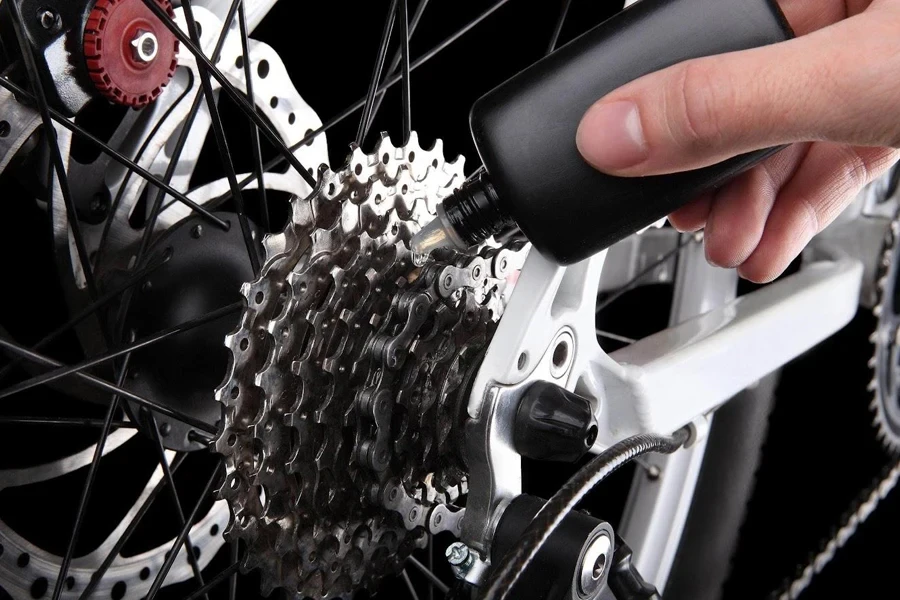
Wet bike lubes are the go-to for damp weather conditions. They are like thick oil or light grease, meaning they can last long and handle heavy rain. However, wet lubes are terrible in dry conditions because they attract dirt easily. They can also make a mess, not just when customers put them on but when they touch them with their hands, legs, or cycling socks.
Dry lube
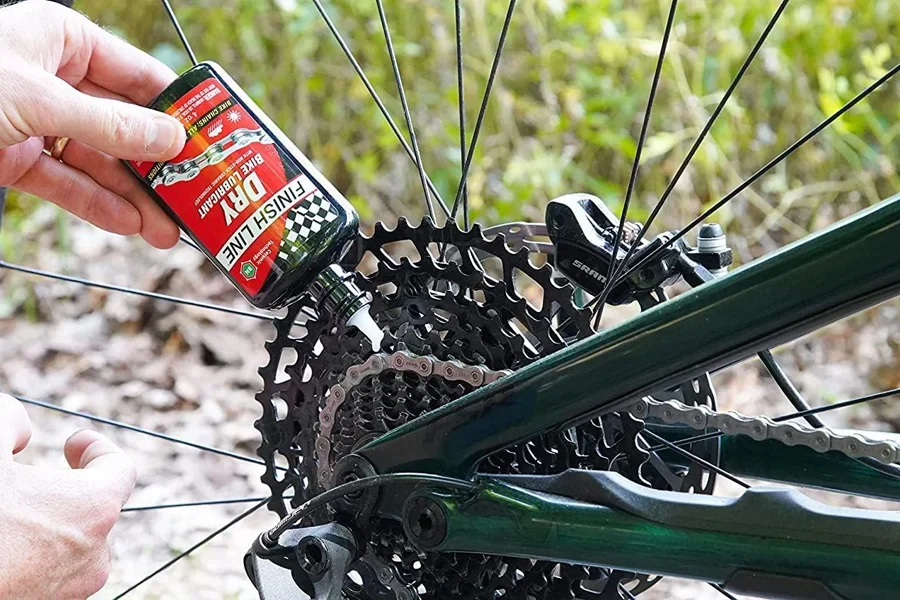
This lubricant is perfect for dry weather. Dry lube is very light, featuring oils mixed with liquid to cover the chain’s parts well. Customers can use dry lubes to keep their chains fairly clean and maintain good performance. But if it rains hard or users wash their bikes, they must clean the chain and apply the lube again to prevent negative performance.
Ceramic lube
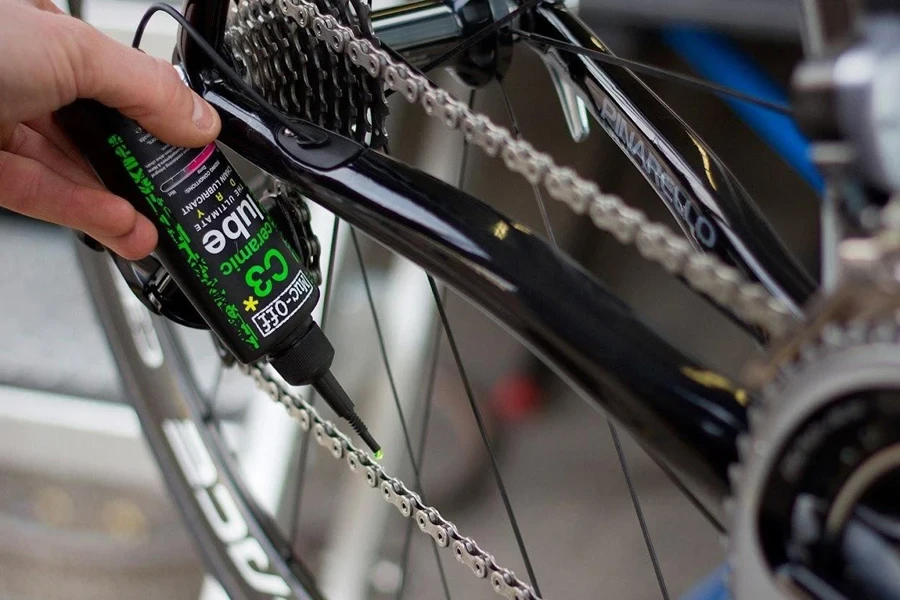
Recently, ceramic lubes have become popular, boasting better performance but at higher prices. But the problem is that it’s not always clear what manufacturers make them from or how they are better than other lubes. For example, Muc-Off, a bike lube company, says their ceramic lubes have tiny ceramic particles that reduce friction more than the synthetic oils in regular lube.
They are pricier but claim to make customer’s drivetrain last longer, saving them money in the long run. However, another brand (ZFC) suggests there’s not enough evidence to support these claims about ceramic lubes and doesn’t recommend them.
Wax lube
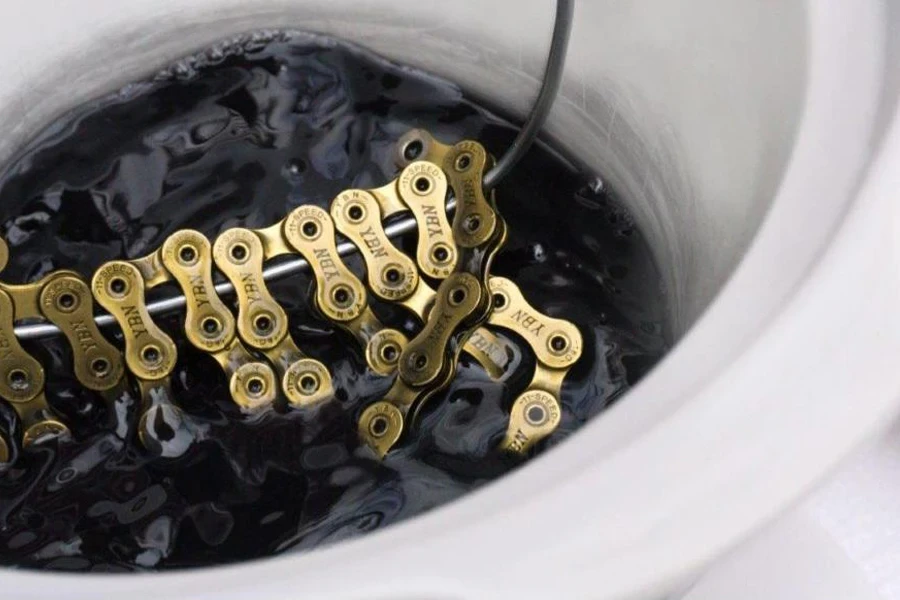
Paraffin wax-based lubricants have become popular because tests show they are super efficient, long-lasting, and dirt-resistant. Manufacturers usually mix the wax with additives like PTFE and fluid to give it that spread. Then, after application, wax lubes form a hard, almost dry layer on the chain to reduce friction.
Factors to consider when stocking up on bike lubes to sell
Riding conditions

As mentioned in the previous section, each lube type excels in specific conditions. Offering the wrong one to customers causes premature wear and would most likely result in bad reviews. Dry lubes in damp conditions won’t protect the chain, and wet lubes in dry conditions will clog things up.
In rain or mud, wet lube thickness and greater water resistance will keep them on the chain—instead of falling off quickly like dry lubes. But in dusty or sandy areas, dry lubes have a thinner formula that will attract less dirt and debris, unlike wet lubes, which would turn into a hunky mess. Wax lubes offer some protection for both conditions, but customers must remove and reapply them if they ride in the rain to prevent rust.
Customers will appreciate the retailer’s expertise when they explain why specific lube suits their needs. It shows businesses understand bike maintenance and care about their riding experience. Plus, stocking lubes for various conditions means business buyers can cater to different types of cyclists, increasing their customer base.
Bicycle type
Road bikes
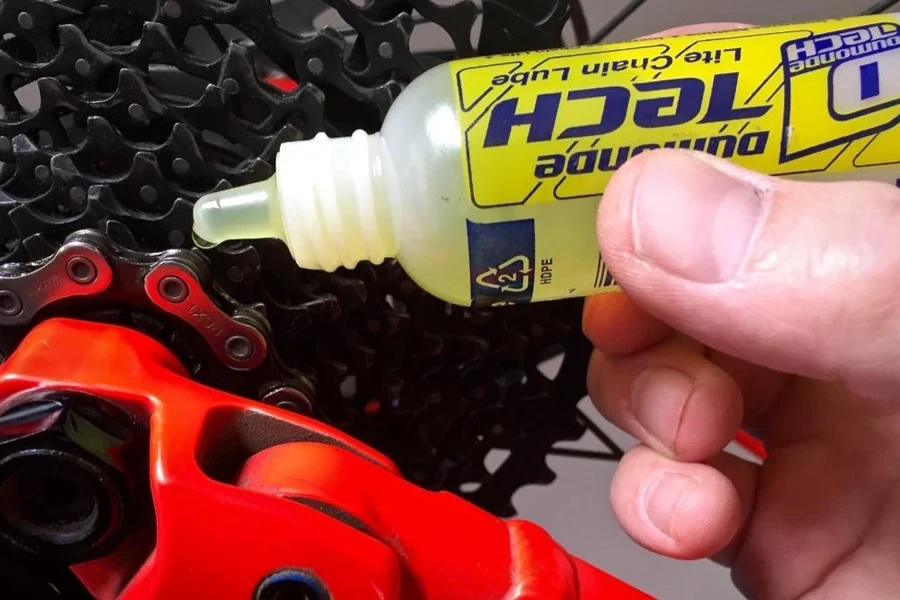
These bikes focus on low friction and cleanliness for speed and efficiency. So, retailers can offer road bike riders dry or wax-based lubes, as they attract less dirt and won’t clog components in dry conditions.
Mountain bikes
Mountain bikes endure much harsher conditions with mud, water, and dust. Therefore, wet lubes are a must for their increased water resistance and staying power, protecting the chain and gears against these elements.
Hybrid/commuter bikes
These bikes need a balance of lubes depending on the intended use. If it’s mainly road riding with occasional dirt paths, offering them a dry lube will suffice. But a more versatile “all-conditions” lube will give them a much better experience for more varied conditions.
E-bikes
These bikes often have powerful motors and high-torque drivetrains. So, retailers must stock lube specifically designed for the demands of e-bike chains. It’ll help buyers extend the lifespan of their components.
Application method
Drip bottle
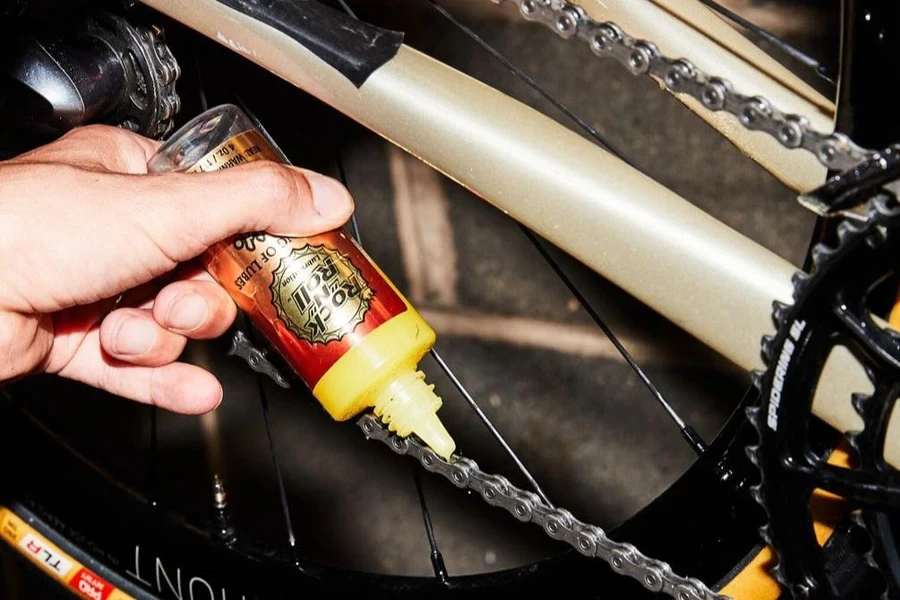
These bike lubes are the most traditional and familiar options. Drip bottles are also the most common type. Customers of all experience levels are likely comfortable with this application method. Plus, most drip bottle lubes work well for general chain maintenance.
Spray lube
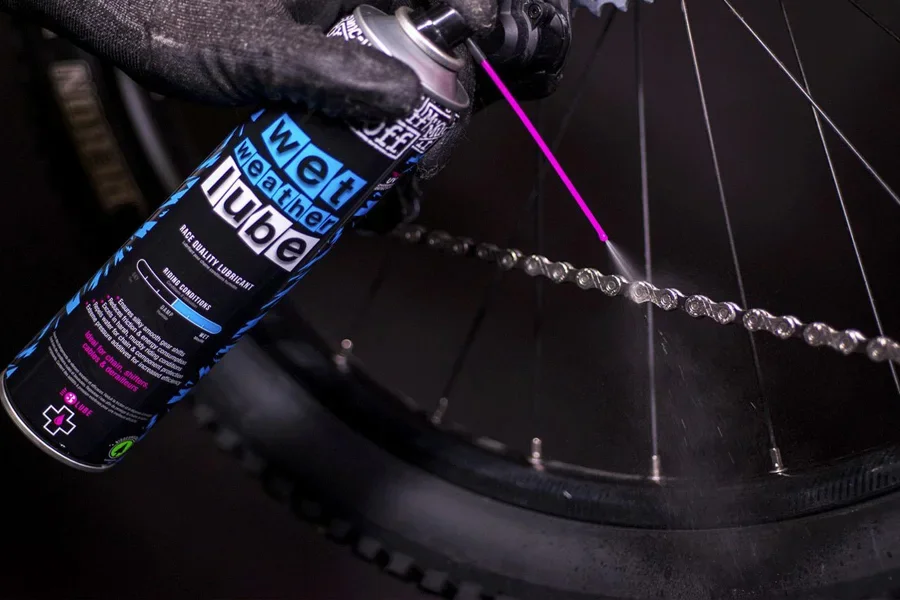
Spray bike lubes are mess-free and great for quick touch-ups. Although they require precise application, spray lubes are ideal for customers who value ease of use over focused lubrication. This application can also handle general maintenance. Spray lubes can be helpful for pivots, cables, and other small spaces that require precise lubrication.
Wax-based lubricants

These lubes often require more intricate preparation and a dedicated workspace. They appeal more to the mechanically-inclined cyclists looking for complete chain cleanliness and longevity. Since wax-based lubes generally involve a more thorough application process, they are less ideal for on-the-go lubrication.
Environmental impact
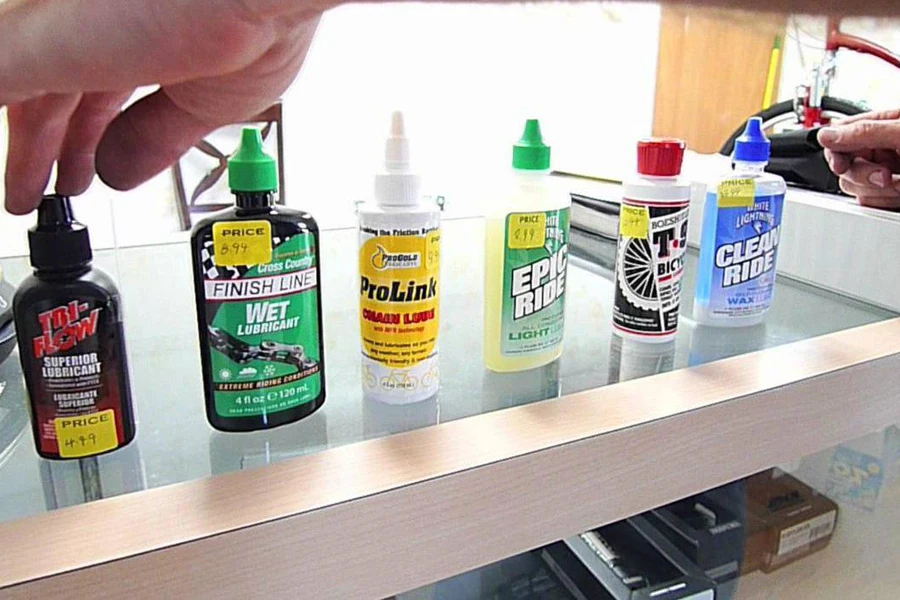
Traditional bicycle lubricants often contain petroleum-based oils and other chemicals like PTFE (Teflon) that can be harmful to the environment. If customers wash these substances off the chain outdoors, they can contaminate waterways, persist in the environment, and potentially harm aquatic life. As cycling becomes increasingly popular, many manufacturers and brands are making efforts to minimize their environmental footprint.
Customers are also becoming more eco-conscious and might specifically seek out sustainable options. The good news is there is a growing market for biodegradable and plant-based bike lubes. These options use renewable, non-toxic ingredients, break down more easily into the environment, and offer comparable performance to traditional lubes.
Note: While eco-friendly options are great for the environment, some customers still want traditional variants. It’s good practice to have a mix of standard lubes and eco-friendly options. With this strategy, retailers can appeal to the widest range of customers.
Effective cross-selling techniques to make bike lube more attractive

Online store strategies
Technique #1: Bundling
If retailers are selling bicycles, they can offer prospects complimentary lubes (e.g., mountain bikes with wet lube or road bikes with dry lube). Alternatively, pair lubes with maintenance kits (cleaners and brushes) or drivetrain components (cassette, chain). Remember to offer a small percentage off the bundle to incentivize the combo purchase.
Technique #2: Product recommendations
Use purchase history and browsing data to suggest relevant lubes. For example, phrases like “Customers who bought this bike also bought…” will draw the buyer’s attention to the retailer’s lube selection. Additionally, place a “You might also like…” section below the “Add to cart” button, but ensure it’s visible.
Technique #3: Post-purchase targeting
Send targeted emails reminding customers when to reapply the lube. These emails should also contain links to the right products in the retailer’s store.
In-store strategies
Technique #1: Strategic placement
Place lube displays near relevant bikes (mountain, road, etc.) and accessories like chains and cleaners. This strategic placement gives lubes maximum visibility and increases the chances of in-store sales.
Technique #2: “Try Before You Buy”
Offer tiny squeeze-on packs to let customers feel the difference between lube types before committing to larger bottles. Also, set up a testing station if space allows. It can be a simple stand holding a bike chain where customers apply sample lubes to experience them.
The bottom line
Bike lubes are an important part of bike maintenance. While they are certainly profitable on their own, cross-selling is one the most effective ways to get them off shelves as soon as possible. Thankfully, this article discussed what businesses should look for when stocking bike lubes and five techniques to help sell them offline and online. Here’s a bonus tip: businesses may also adopt a seasonal approach by offering wet lubes in rainy seasons and dry lubes in summer.
Don’t hesitate to subscribe to Alibaba Reads’ Sports section to receive more helpful insights and information from blogs like this one.




